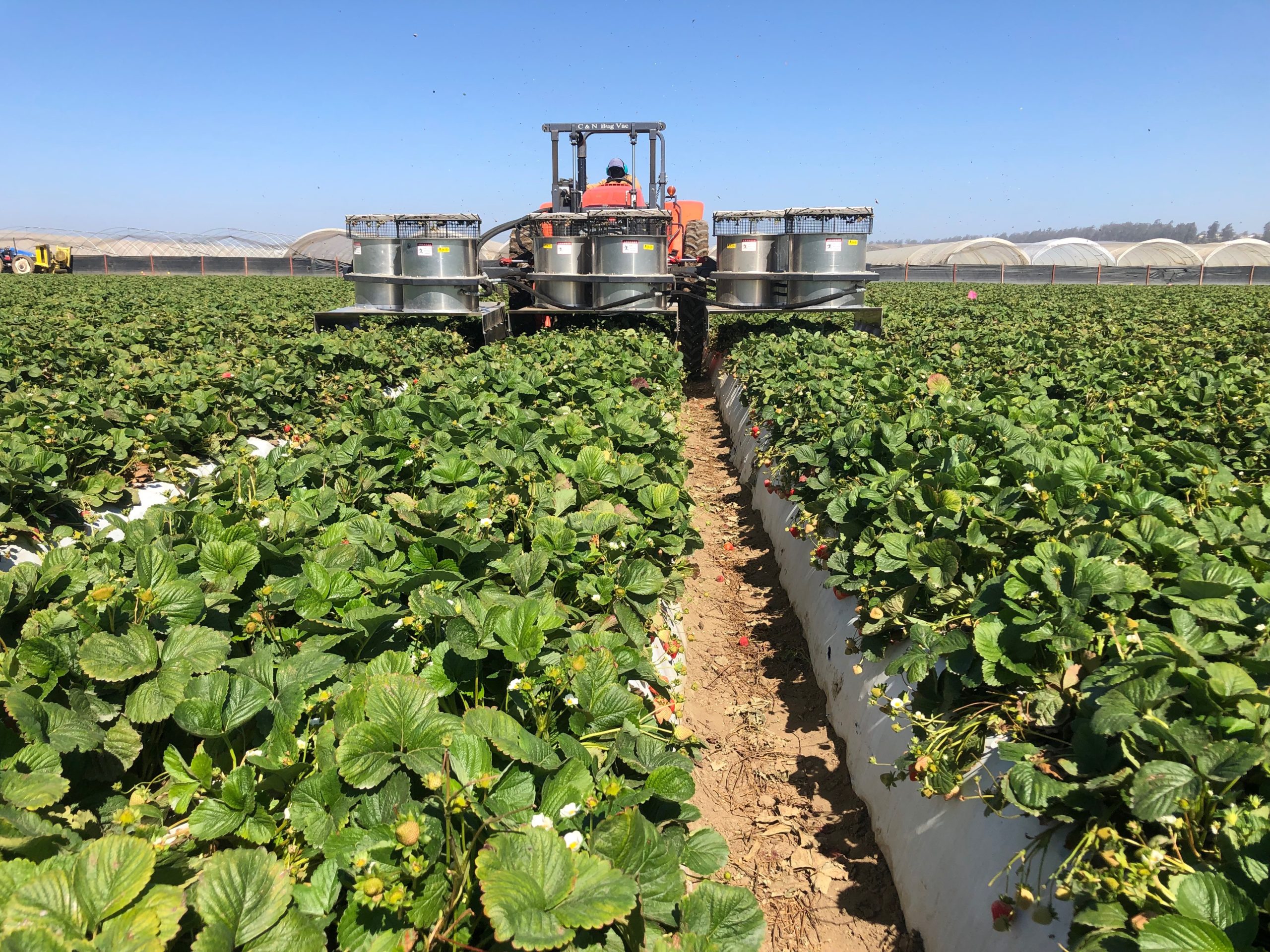
Jun 18, 2021
California betters its bug vacuums for lygus
For the better part of a decade, there has been some version in the market of a bug vacuum for use against lygus in California strawberries. Within five years of its commercial availability, about 90% of strawberry growers adopted the vacuum into their operations, seeing it as a valuable tool not only for a more sustainable control approach, but also in situations where pesticides were not allowed or had run out. That same figure still seems true today.
Lygus bugs are a problem in strawberry, causing misshapen fruit, or “catfacing,” by feeding on the seeds during fruit development. Based on research conducted by the California Strawberry Commission and the Cal Poly Strawberry Center, lygus damage is estimated at $100-200 million annually in decreased fruit yields – a hefty figure for the more than 4,600 organic and 36,400 conventional strawberry acres in the state.
How the bug vacuum has reduced those economic loss figures is still unknown, as a large-scale study to assess these figures has not yet been conducted. There are, however, predictions based on smaller plots.
“We expect the lygus population to decrease by about a third,” said John Lin, production automation manager for both the California Strawberry Commission and the Cal Poly Strawberry Center. “We don’t know yet if that will have a direct translation into a third decrease in damage, but we expect the population to be suppressed by a third based on preliminary results.”
Two districts, two models
Across California’s strawberry acreage are two growing districts – the northern and the southern – that feature two different growing systems, each with a tractor-mounted vacuum designed for the region’s production system. For the four-row system in the southern district, there is a double-barrel bug vacuum, which recently underwent some design changes to improve airflow.
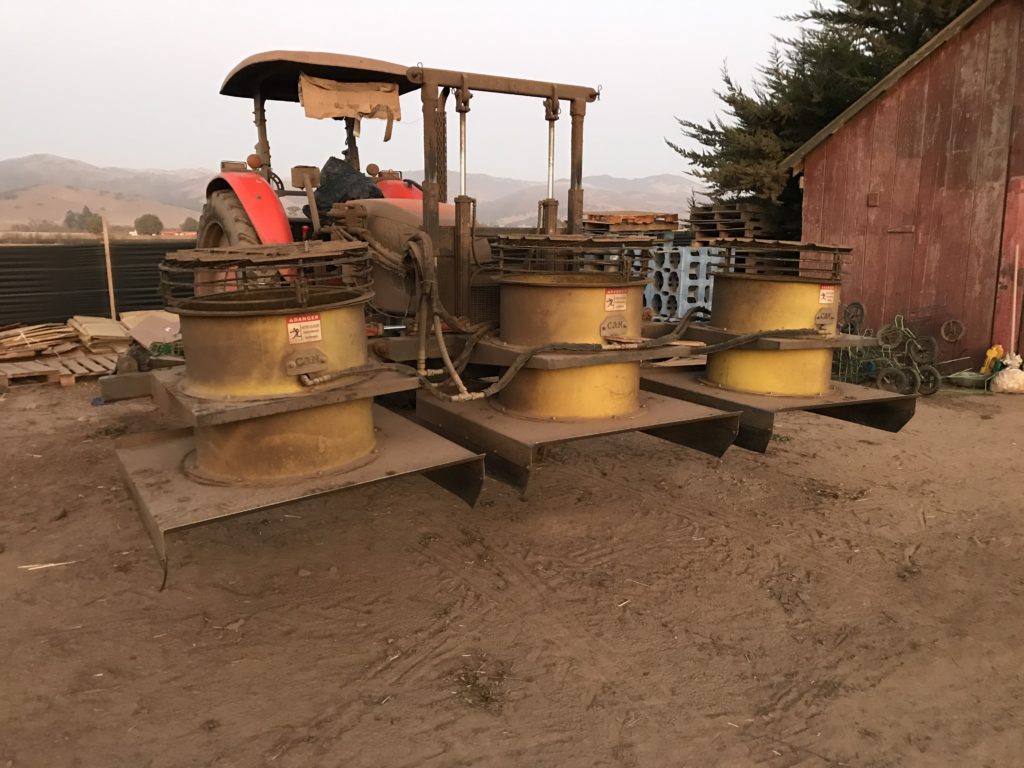
A straight tube design took the place of narrow ducting, which allowed for more efficient fans and maintenance of the 50-mile-per-hour airspeed within the vacuum. The change improved airspeed by 20% by allowing air to flow out of the sides of the duct instead of it being forced through the top where the bugs collect. When the pests are sucked into the machine at such a high velocity, they are unable to make the turn to escape the machine, and thus impact a perforated steel baffle at the top of the machine and are eliminated. Only about 2% of lygus are able to survive the vacuum, and this upgrade removes 2.3 times more lygus per pass than other conventional models.
These changes are the result of an optimization program begun in 2017.
For the northern district, which is heavily concentrated in the Salinas/ Watsonville and Santa Maria areas, is a single-barrel vacuum using the same design concepts and which covers the two-row grow system. Released in late 2020, this model is slightly different in that not only is it a single barrel, but it showed three times more uptake of lygus.
“The double barrel removes about a third of lygus, and the single barrel removes about 40%,” said Lin. “It’s about the power of the tractor translated into vacuum power.”
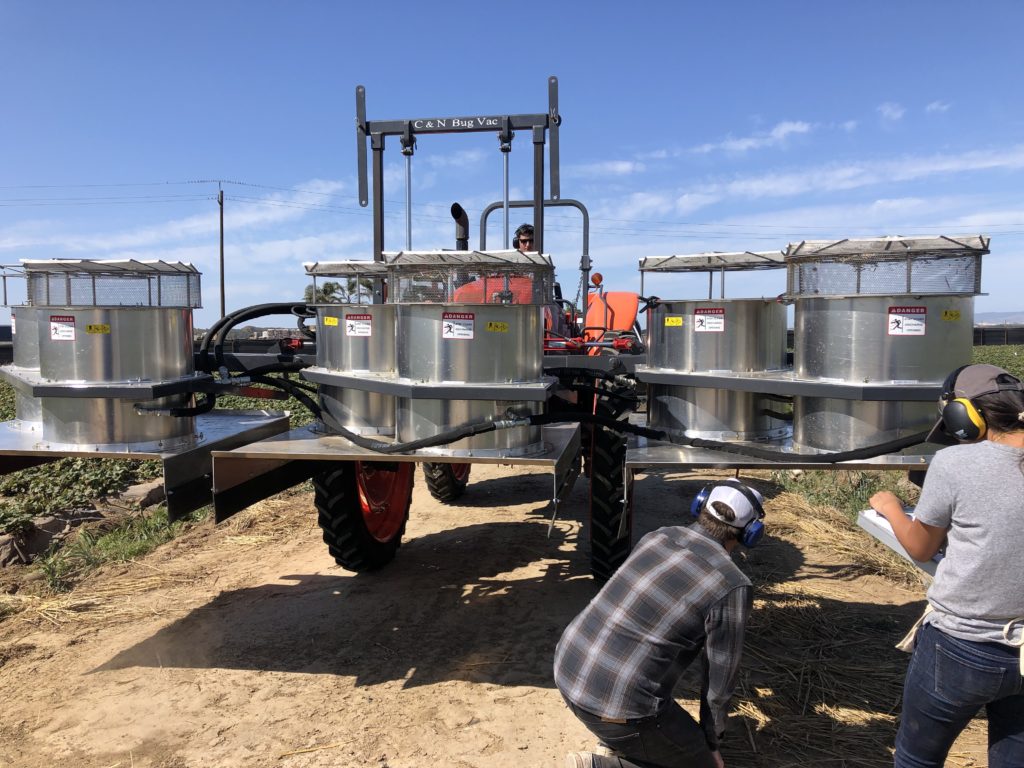
With the double barrel, two barrels cover three rows for a total of six fans, to which the tractor power is transferred. For the single barrel, that one barrel covers four beds for a total of four fans.
“It’s just more power to the fans,” said Lin. “You get more lygus uptake.”
Other aspects to the growing system may influence the higher efficiency, such as larger canopies and plants that are spaced a little farther apart.
Speed and passes matter
On average, growers do one, but possibly two, passes on the field per week with the vacuum. The strawberry commission and strawberry center have done internal studies that included up to 10 consecutive passes on a field.
“What we found was significant diminishing returns at pass four,” said Lin. “So growers can pass over the beds four times and still pick up a significant amount of lygus during that pass.”
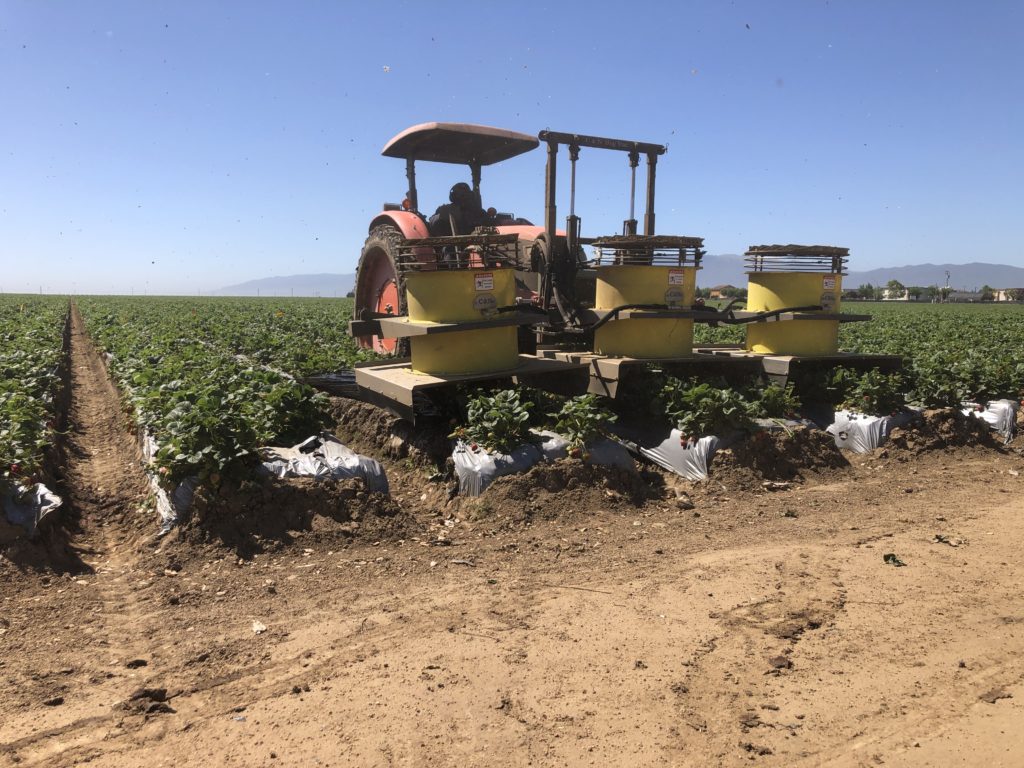
Of course, neither the Commission nor the Center expect that of growers, but they’ve released that information to let growers know that if they are facing significant pest pressures, growers can increase vacuum frequency to help alleviate the issue.
It also helps if growers make sure their machines are optimally set, with the fans set as close to the canopy as they feel comfortable.
“If the fan is 6-12 inches above the canopy, growers are going to get a significant loss in how much lygus they remove. That’s the main mistake. You really want to fly that fan at canopy level,” Lin said.
It’s also recommended that growers drive their tractors at 1-2 miles per hour. And while speed and fan height are the two most common mistakes Lin sees in the field, he also advises growers to double-check that the system is working – that the fans are spinning, and spinning in the correct direction to create the vacuum instead of blowing air.
Build your own
The Commission offers the vacuum’s schematics so growers can build the machines internally with their own mechanics, but they are also commercially available through C&N Tractor in Watsonville, California. Since C&N has sold a version of a bug vacuum for several years, the Commission and Center worked with the company to build the new versions.
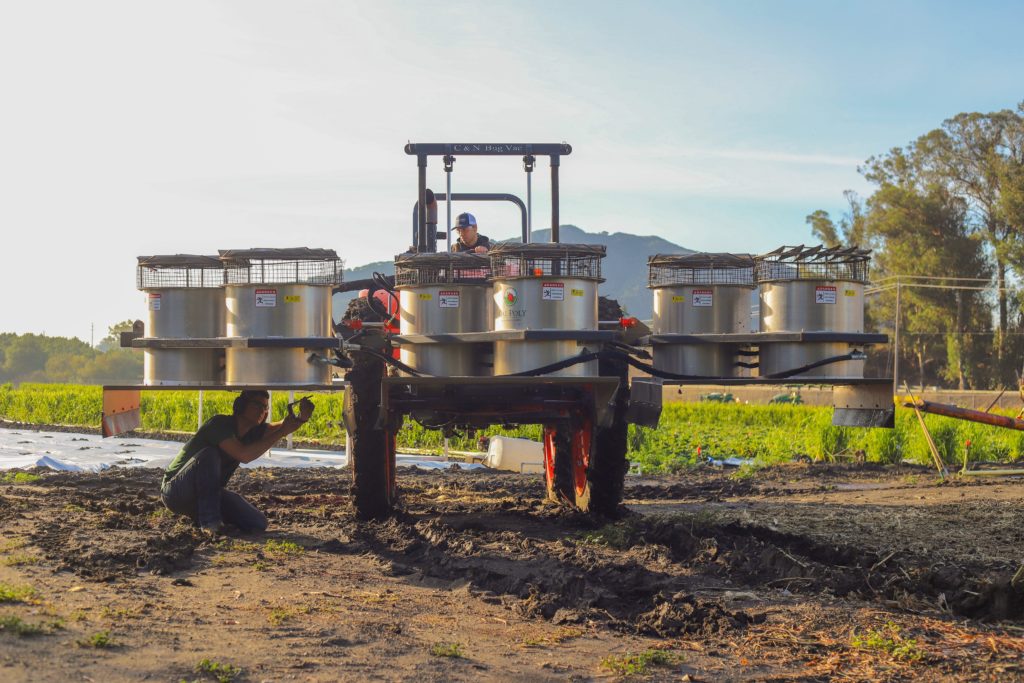
“The ones they’re building now are optimized, so they have all the improvements that the Strawberry Commission researched at the Cal Poly Strawberry Center,” said Lin. “Not just C&N, but any other commercial manufacturer that is interested in fabricating these, we’ll work with them and provide the schematics on how to build them.”
Lin expects about a five-year adoption window for the improved machines as the older machines become obsolete, which reflects the rapid adoption the bug vacuum experienced when it first debuted on the market many years ago. Additionally, the team at the Commission and the Center are pushing forward with additional tools for the vacuums.
“We are in very preliminary stages of adding a lygus monitoring system to the vacuum, so that growers can actually see how much lygus they are removing and, based on models, the current population mitigation they’ve achieved with their vacuums,” said Lin. “We’re trying to add, basically, a field scouting tool to the vacuum.”
At top, a double-barrel vacuum removes lygus in a southern district growing region. Photos: California Strawberry Commission









